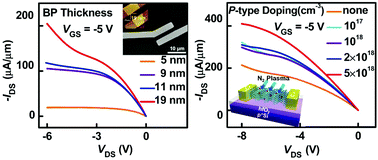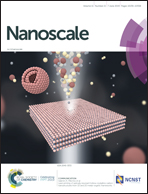Exploring and suppressing the kink effect of black phosphorus field-effect transistors operating in the saturation regime†
Abstract
With continuous device scaling, avalanche breakdown in two-dimensional (2D) transistors severely degrades device output characteristics and overall reliability. It is highly desirable to understand the origin of such electrical breakdown for exploring high-performance 2D transistors. Here, we report an anomalous increase in the drain currents of black phosphorus (BP)-based transistors operating in the saturation regime. Through the comprehensive investigation of various channel thicknesses, channel lengths and operating temperatures, such novel behavior is attributed to the kink effect originating from impact ionization and the related potential shift inside the channel, which is further confirmed by device numerical simulations. Furthermore, nitrogen plasma treatment is carried out to eliminate the current anomalous increase and suppress the kink effect with improved saturation current. This work not only sheds light on the understanding of carrier transport within BP transistors, but also could open up a new avenue for achieving high-performance and reliable electronic devices based on 2D materials.



 Please wait while we load your content...
Please wait while we load your content...